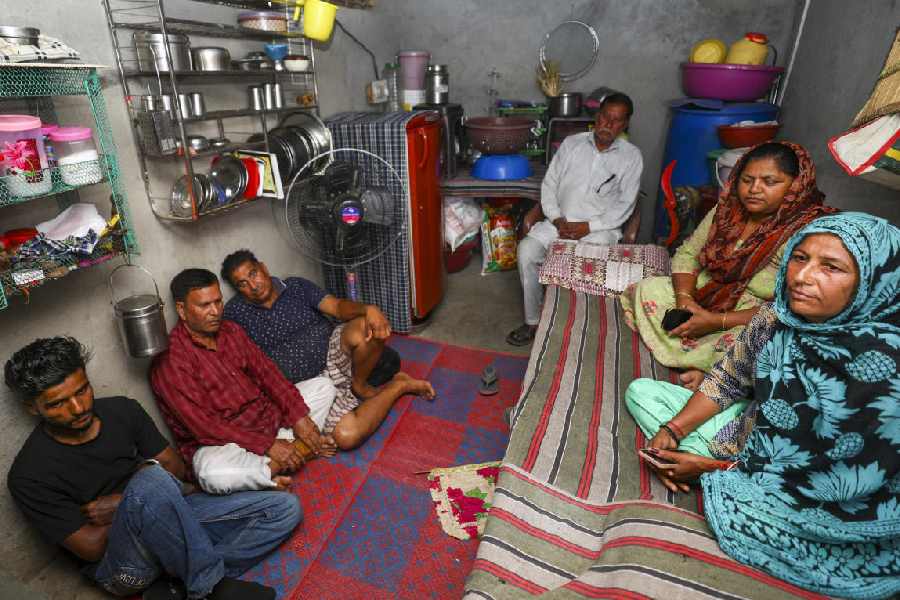 |
I have an aunt who grew up in the countryside of South Bengal — near Basirhat — and has considerable first-hand knowledge of what grows when, of seasonal foods and eating habits and traditional customs, before she came to the city and was bewildered by the year-round availability of almost every kind of produce — more and more so, as the days go by. For even in Calcutta, a couple of decades ago, you could get tomatoes (in most markets) only in winter.
About nine years ago, when I wanted to write about nolen gur and patali gur, the liquid and solid jaggery made from the juice of date palms that grow in South Bengal, she gave me amazing inputs about procedures, terminology, gradation according to quality and so forth.
So when I thought to begin the New Year with a Foodies’ Calendar of Bengal, naturally I turned to her, and an uncle as well, who knows quite a bit about these things.
They both cautioned me that they were relying largely on past memories and there were likely to be acts of omission; that there were also variations and differences between different parts of the state, particularly if they harked back to pre-partition days. Sometimes the same vegetables may crop up more than once, at different times of the year.
“Relax,” I said. “I am not sitting for an examination. I only want to share a few thoughts about the sheer variety and bounty that we enjoy here, particularly with regard to vegetables and fruits, all through the year.” For although winter vegetables are most popular and universally known, it is a myth that we are deprived during other seasons.
So here goes.
January-February (Pous-Maagh. We can’t be too accurate or fussy here):
Cabbage, cauliflowers, carrots, beans, horse radish, spinach (palong shaak), methi shaak (leaves and tender stems of fenugreek), kolai shaak, beto shaak, aubergines, peas, tomatoes, new potatoes, spring onions, sorse shaak (leaves of the mustard plant), sorse phool (mustard flowers), khejurer rosh, date palm juice from which jaggery (gur) is made, oranges, apples and chiku.
There are no English names for many of the things we eat, especially the edible leaves and stems of numerous plants, which we simply call shaak, and cook very simply as well, though there are also elaborate recipes. Simply-cooked shaaks involve throwing a few dry red chillies into oil with either cumin seeds or panch phoron or chopped garlic or neither of these, and stir-frying the chopped and cleaned leaves and stems with salt and turmeric till cooked and the moisture has dried.
Potatoes and other vegetables often accompany shaaks and they all have very distinct characters and simply squashed thoroughly into fresh steamed rice with or without a dash of kasundi (mustard sauce) are heavenly.
March-April (Phalgun-Chaitra):
Uchhe (small bitter gourd), potol (wax gourd), jhinge (ridge gourd), sajne data aar phool (drum sticks and the flowers of this plant), white pumpkin, neem (margosa leaves) — bitter and delicious with aubergines — neem flowers as well, pui shaak (climbing spinach), sugarcane, paka bel kool (Indian plums) and guavas. All the various flowers we eat can also be simply stir-fried or dipped whole into batter and deep-fried.
April-May-June (Baisakh-Jaistha):
Enchor (green jackfruit, cooked with potatoes like a meat curry and delicious), lal shaak, pui shaak, red pumpkin and its flowers, green papaya, green raw bananas (kanch kola), mangoes (what a subject!), lychees, ripe jackfruit, watermelon, jamrool, kalo jam, aash phol, taalshaash.
July-August (Aashar Srabon):
Kalmi shaak, kochu shaak, paat shaak, kochur koli (kochu is arum, or colacassia tuber), ripe dates (not great to eat but still edible — the variety that grows here), paka tal (the fruit of another variety of palm tree), pineapple and pomelo.
September-October (Bhadro-Aashwin):
Banana blossoms (mocha), gati kochu, ol (yam), kumro shaak (leaves and stems of the red pumpkin), snake gourd, naspati (hardish pears), water chestnut (paniphal), custard apple, pomelo.
November-December (Kartik- Aghrayan):
Seem (broad beans), kakrol, cauliflower, and many items listed for Pous-Maagh.
There are also shaak varieties that are available all year, as are the leaves of certain plants like arum and drumsticks. Banana pith (thor) can also be cut any time. And there is sonchi shaak and gimi shaak and honche shaak…
Favourite varieties of fish typical to Bengal such as hilsa, bekti, parshe (mullet), tangra, bhangor and several shrimp and prawn varieties also follow an annual calendar with winter being a good time for parshe and tangra and the fag end of the monsoon best for the hilsa of West Bengal.
But that apart, we must be among the most industrious and inventive vegetarians around.










